Art World
See These 5 Show-Stopping Works at Art Basel Unlimited 2018
To join the conversation around curator Gianni Jetzer's latest edition of Art Basel Unlimited, add these works to your must-see list.
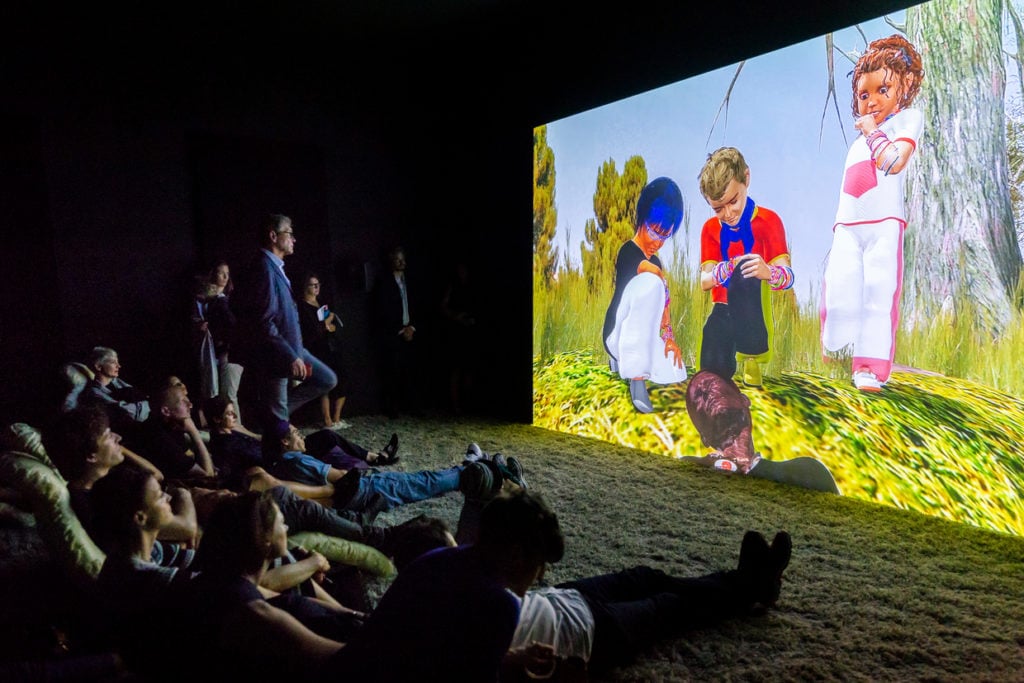
To join the conversation around curator Gianni Jetzer's latest edition of Art Basel Unlimited, add these works to your must-see list.

Tim Schneider

In a city, country, and even a larger event defined by elegant restraint, Art Basel Unlimited feels decidedly American in its bigger-is-better ethos. The monumentality of the offerings also makes this sector of the fair perhaps the only one where the best metric to judge an exhibitor’s success is whether or not their installation attracts crowds and conversations, not whether or not it generates sales. Call it the “moth-to-a-flame index.”
With that criterion in mind, artnet News‘s Tim Schneider ventured to the unveiling of Art Basel Unlimited, which has been curated once again by Gianni Jetzer, to round up the pieces that will drive the cocktail party chatter and social-media story of the fair in 2018. Here are the five works you need to know to join the narrative.
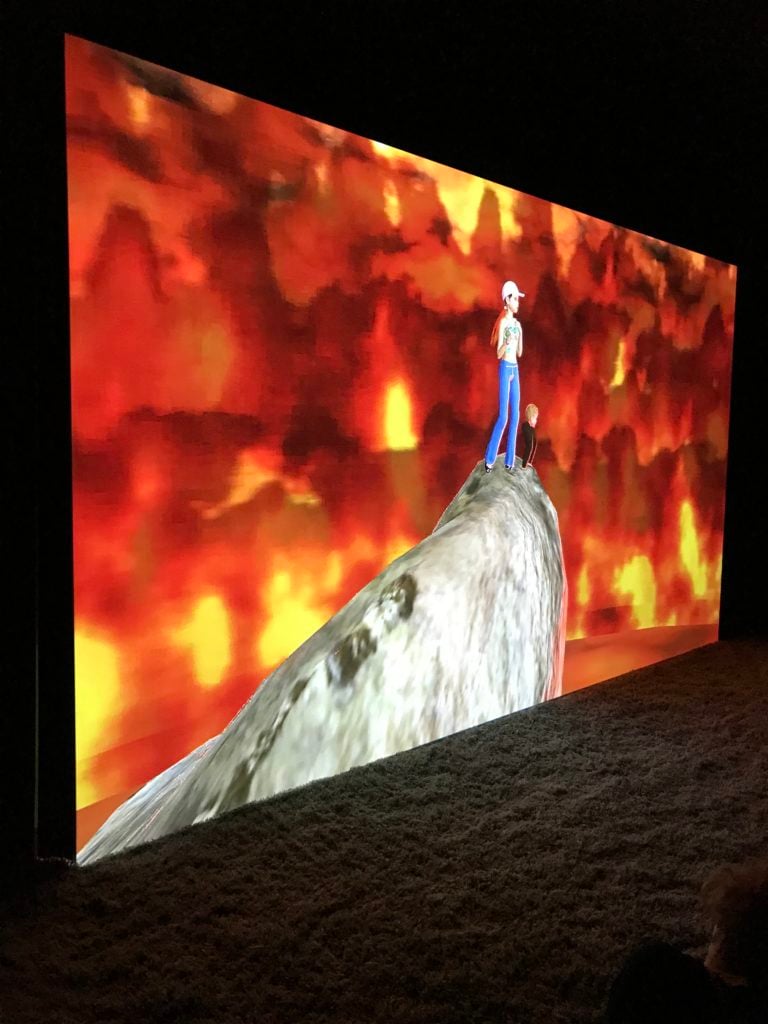
Photo by Tim Schneider.
It’s rare to find work that feels genuinely transgressive at Art Basel, particularly the Swiss edition. And yet that’s exactly what Rafman’s nearly hour-long digital fever dream does. Using off-the-shelf 3D graphics software, the artist funnels his actual nocturnal reveries into a computer graphics epic equal parts disturbing and ridiculous, the way dream logic truly is at its best (and worst). Imagine The Odyssey re-interpreted by a millennial who just skimmed the Wikipedia summary at random between Reddit sessions and a binge of Black Mirror and you’ll start to get the picture. Rafman builds out the absurdist horror with an original electronic score by collaborators Oneohtrix Point Never and James Ferraro, plus a few pieces of sculptural seating that look vaguely like melting effigies. TL;DR version: If you want to ballpark the likelihood you’ll have an interesting chat with your seatmates at your next Art Basel dinner, ask them how they felt about Dream Journal.
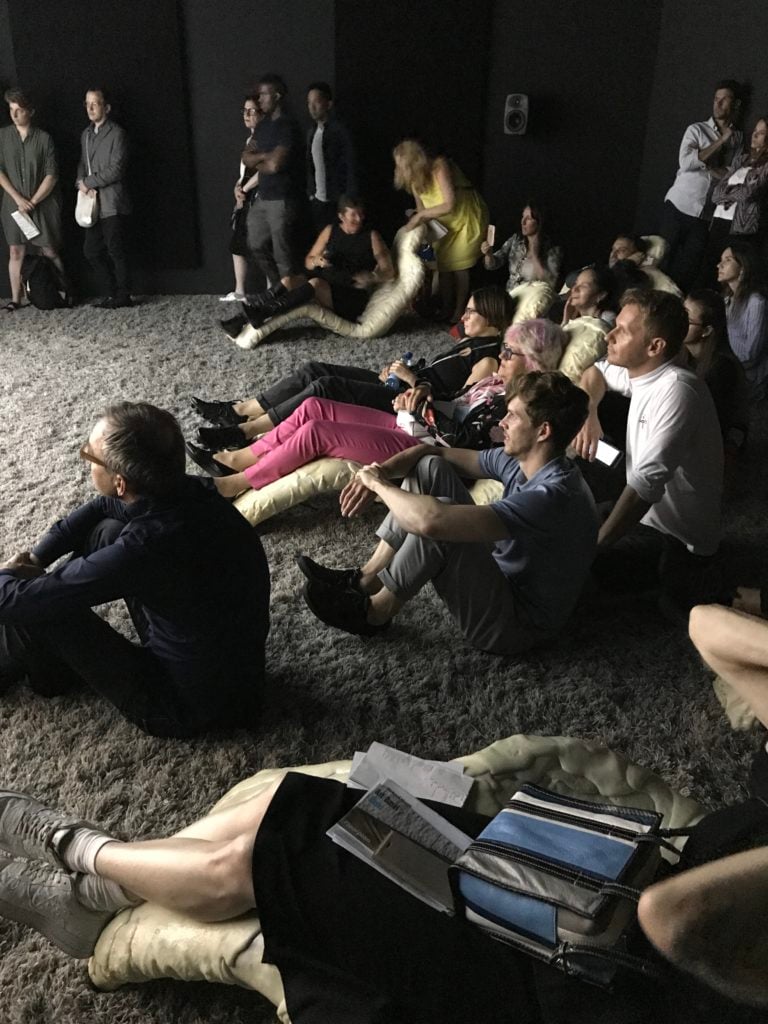
Crowd and sculptural seating for Rafman’s Dream Journal 2016–2017 (2017). Photo by Tim Schneider.
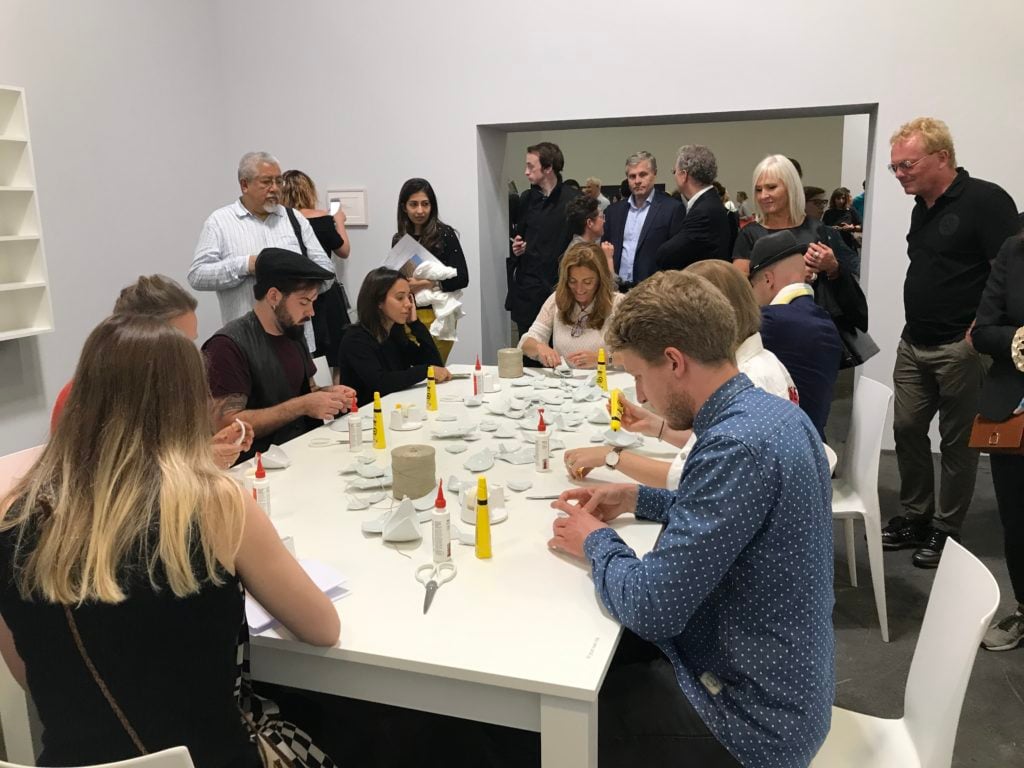
Photo by Tim Schneider.
About midway through the opening of Unlimited, Ono’s participatory installation was the first space in the hall with a nightclub-length line to get in. Originally presented in 1966, making it one of her earliest interactive works, Mend Piece invites visitors to select from a table full of fractured porcelain cups and reassemble their choice with glue, tape, ribbon, and most of all, a few minutes of care for something outside of themselves. (A framed, handwritten note from the artist instructs entrants: “Mend carefully / Think of mending the world / At the same time.”) When complete, participants add their (white) handiwork to a set of (white) shelves flanking the (white) worktable between the four (white) walls, creating some serious Alice in Wonderland vibes—and one of the first must-have photo opps of the week.
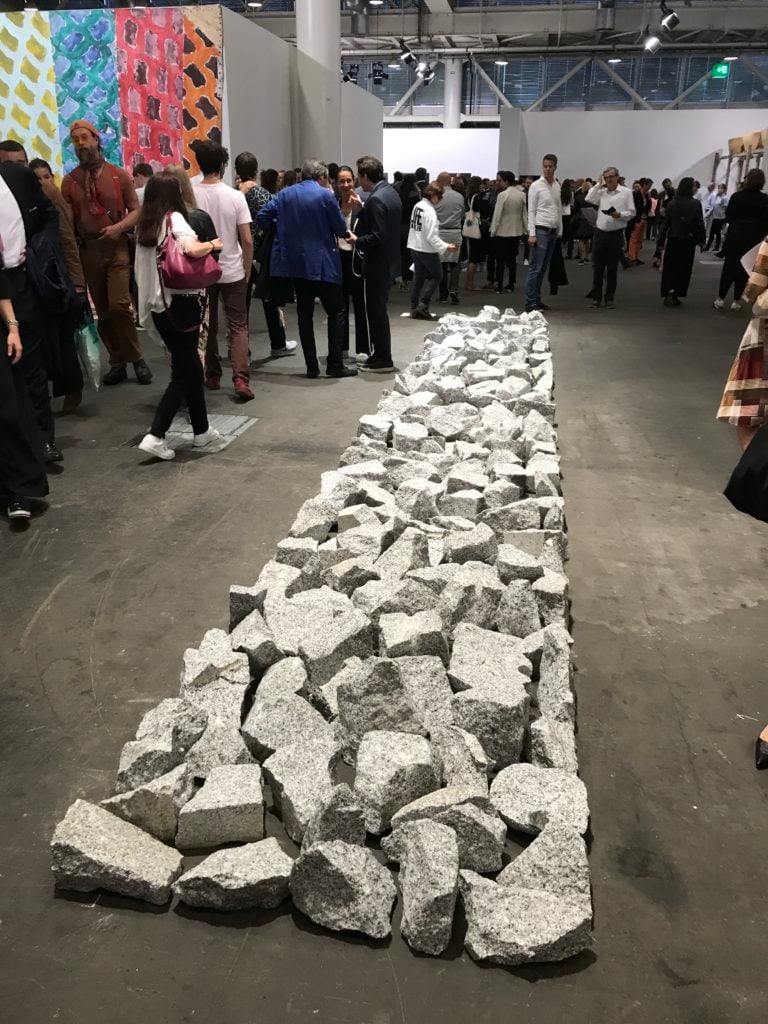
Photo by Tim Schneider.
If you want an effective way to stop a stampede of Art Basel VIPs in their tracks on opening day, take a cue from Long’s practice and try literally stopping them in their tracks. This classic (yet recent) example of the artist’s long-running stone floor sculptures stakes its claim to a nearly nine-meter by one-meter (AKA 30-foot by four-foot) stretch of prime Messe real estate, reasserting the stark power and beauty of nature inside a man-made extravaganza of spectacle. According to Lisson director Joanna Thornberry, the piece also qualifies as a double rarity: one of the few works Long has made using ivory granite from Spain, and an installation being publicly exhibited for the first time. The combination paid off. By early evening, Long’s masterstroke of elemental Minimalism was on reserve at a price in the neighborhood of £200,000–£300,000 ($268,000-$402,000.)
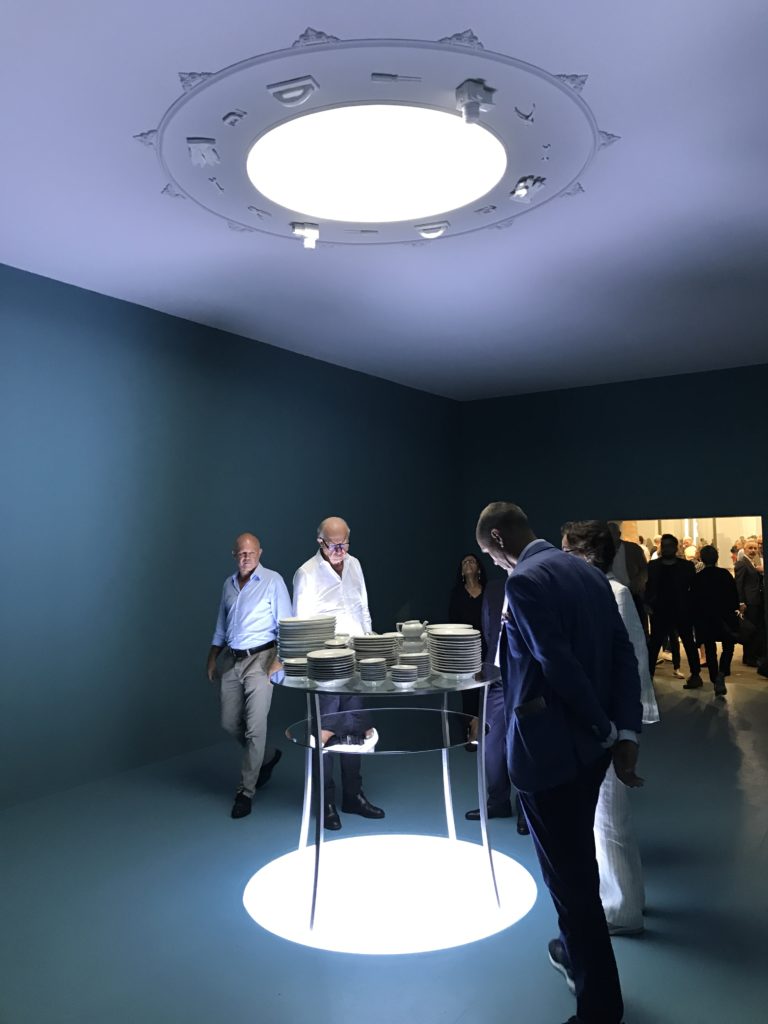
Photo by Tim Schneider.
Ocean-blue wall (and floor and ceiling) paint aside, what makes Bloom’s 1991 installation so magnetic is that it holds such a sizable space with so little material. But as gallerist David Lewis points out, the artist achieves this feat partly due to the fact that the story she leverages here is so huge. At the center of the booth stands a glass table stacked with porcelain dinnerware bearing the name of the RMS Titanic on its facing surfaces—and, if you mind the reflections shown in the circular mirror below them, images of the ship’s eventual disaster on its undersides. Above this composition hovers a circular ceiling frieze depicting objects documented as lost in space by NASA, either thanks to minor astronaut accidents (like losing your grip on a flashlight during a spacewalk) or catastrophic satellite wrecks. Lewis notes that, true to her practice, Bloom inverts these prototypically “macho” stories about shipwrecks and space exploration by re-centering them as meditations on absence. There’s also an air of Stanley Kubrick’s 2001: A Space Odyssey about the installation, in the way that it sings from the depths of the air to the vast mystery of the cosmos. The Tip of the Iceberg was still available at $270,000 yesterday afternoon.
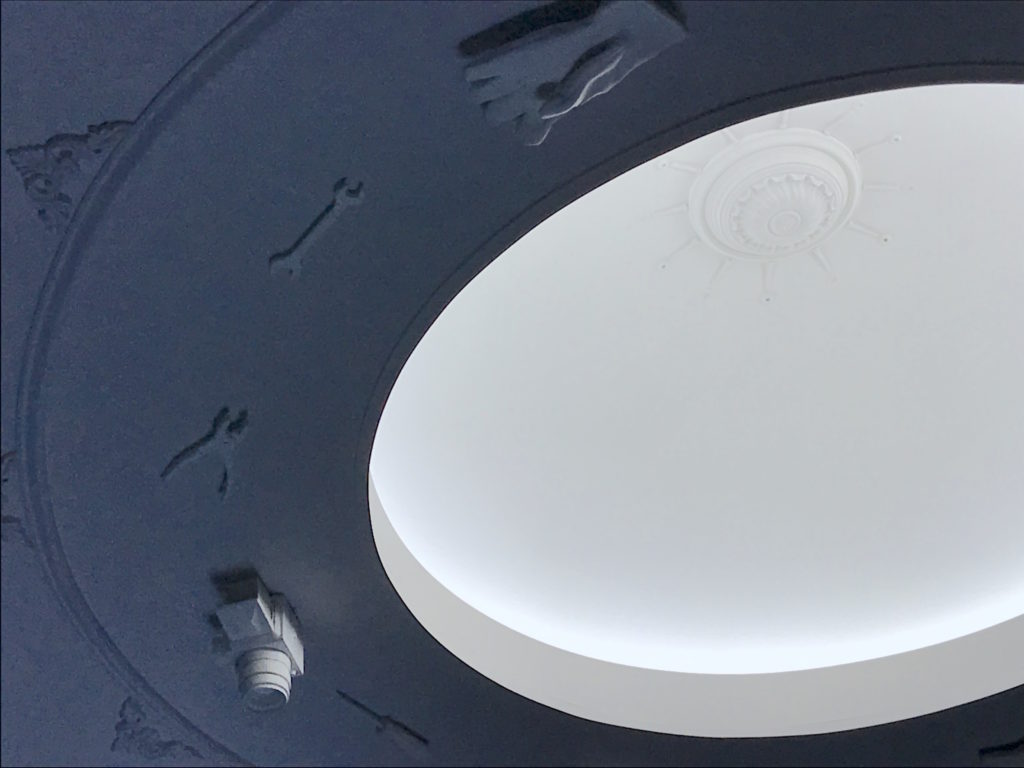
Barbara Bloom, detail of The Tip of the Iceberg (1991). Photo by Tim Schneider.
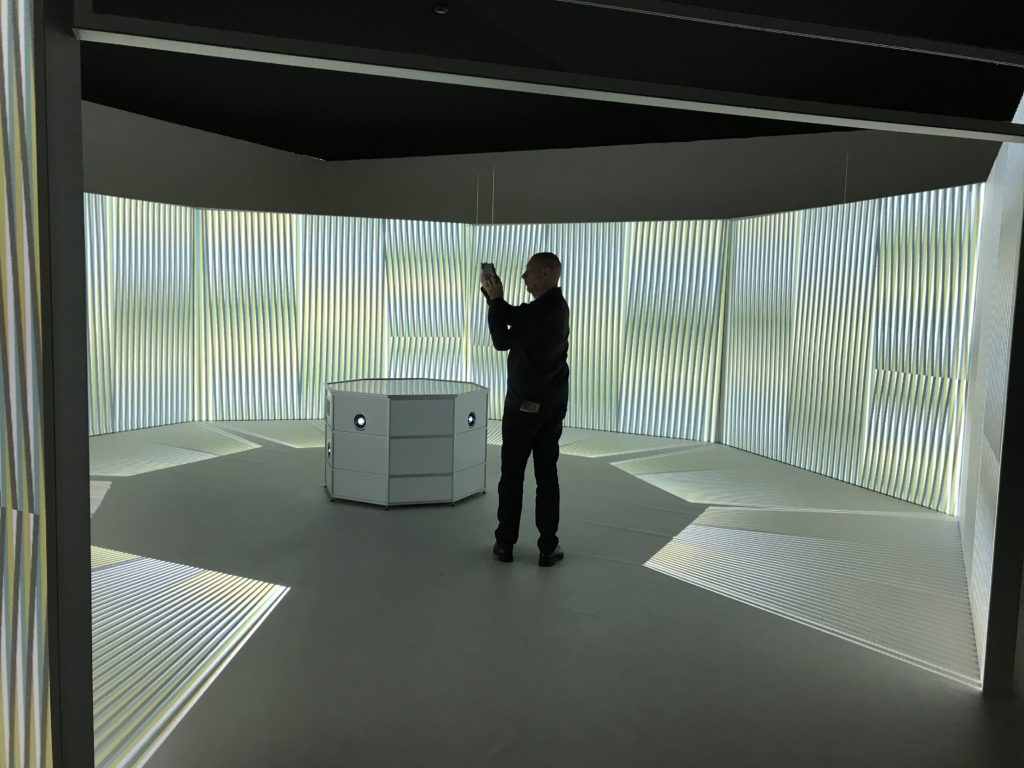
Photo by Tim Schneider.
In an era where the viewing experience is often defined by a constant pressure to avoid accidentally blowing up someone else’s Instagram shot, the Venezuelan-born Cruz-Diez turns audience interference into a virtue. He has worked for decades to mine the possibilities of decoupling hues from form, reference, and even materiality, proving that our perceptions of color shift depending on other external factors. For this site-specific presentation of a work originated in 1974, a center module housing seven projectors casts an ever-changing progression of differently hued zigs and zags on an enclosure of double-sided, translucent screens. As visitors tour the installation’s interior, their shadows interact with the kinetic color story seen by viewers standing outside the octagon—and create the sensation in those viewers that they themselves are moving in the opposite direction of the silhouettes despite standing still. Combine this almost out-of-body experience with the piece’s pure visual pleasure, and the experience becomes quietly revelatory. According to Galeria Raquel Arnaud director Myra Arnaud, the installation was on hold at a price of $400,000 before closing time.